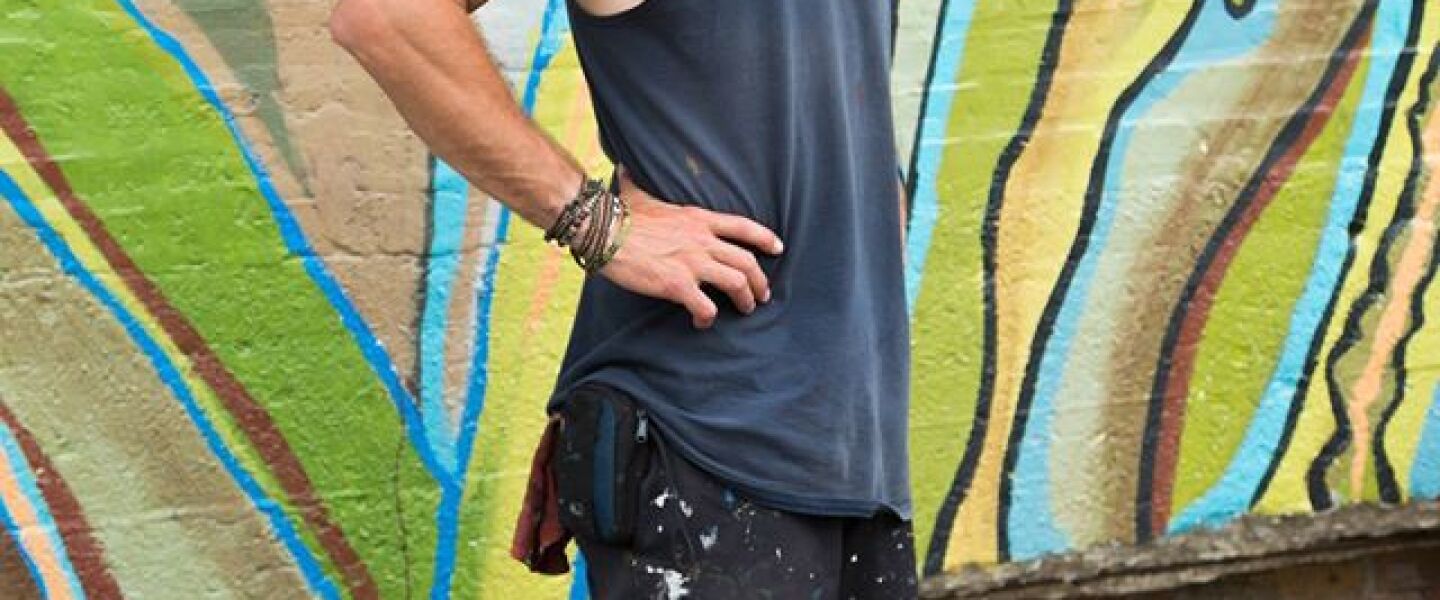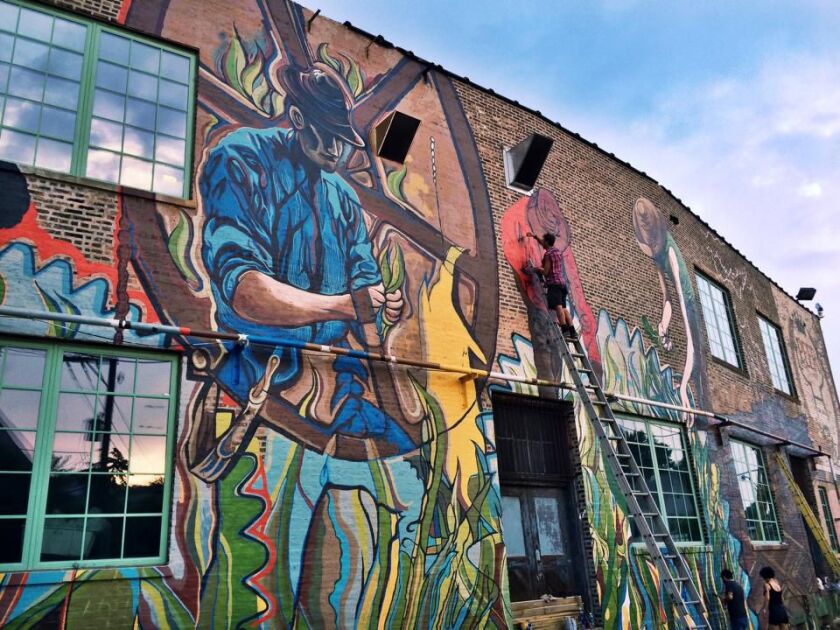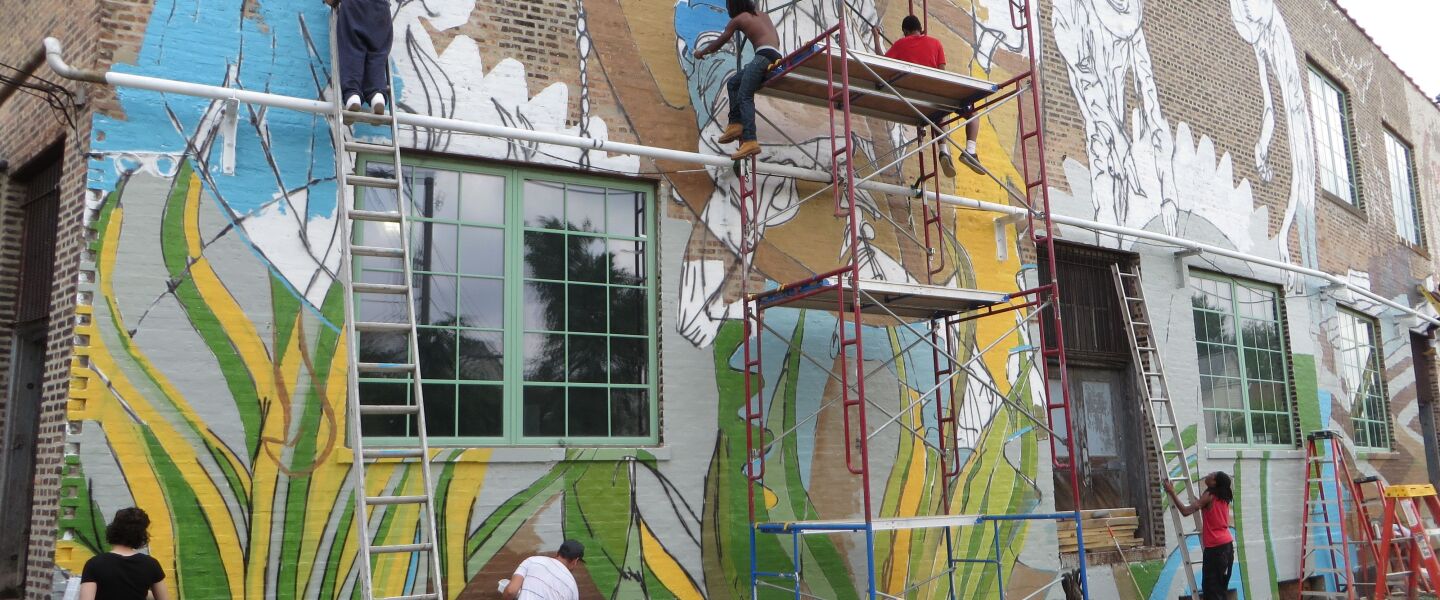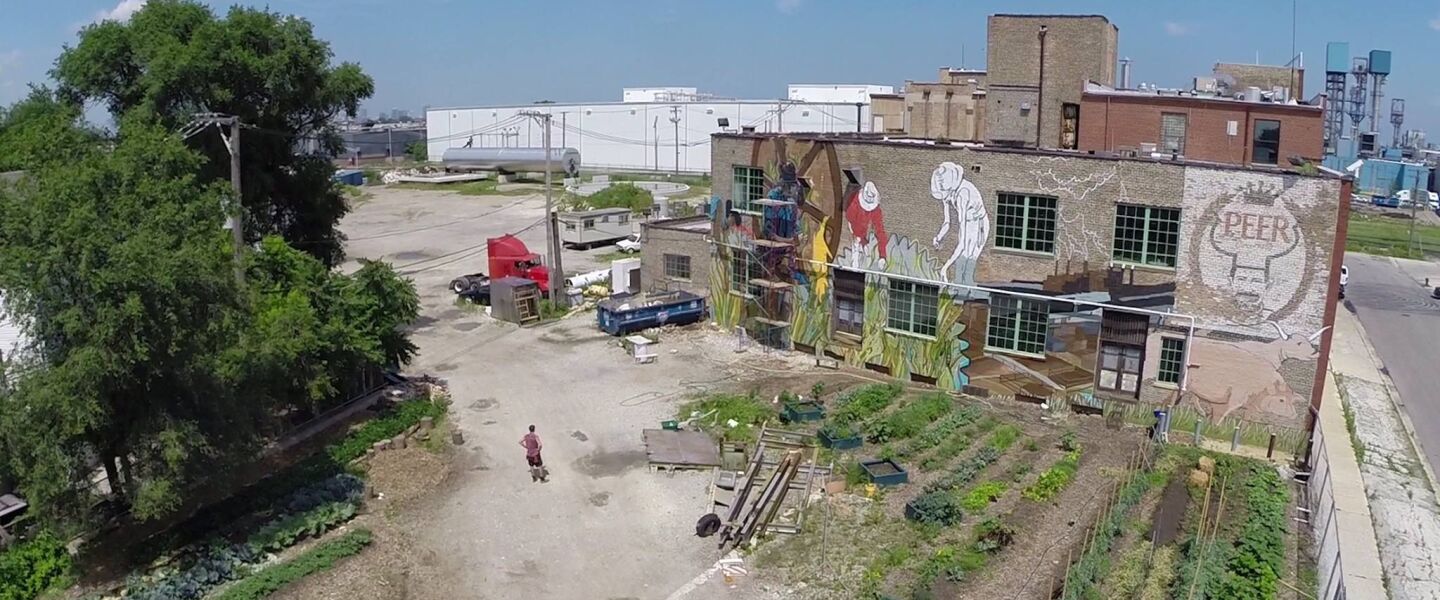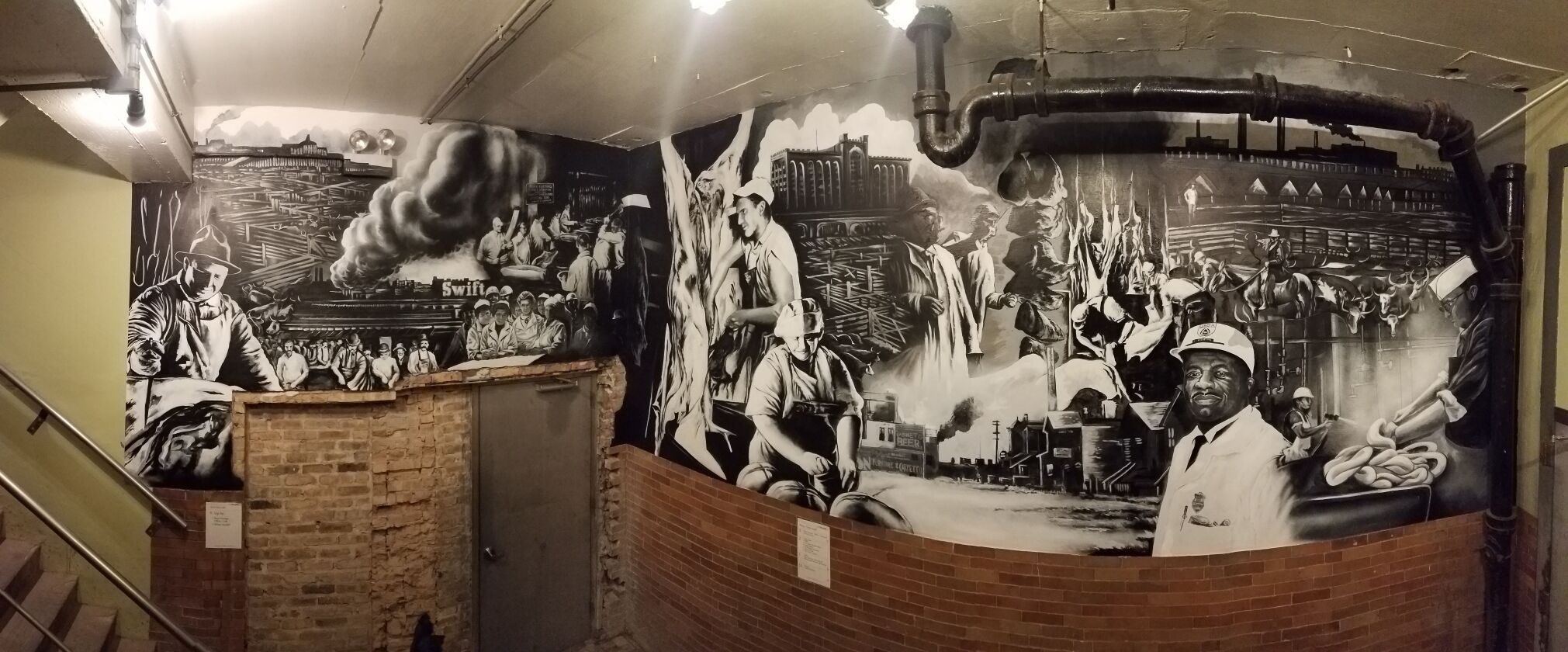Chicago artist Joe Miller’s 2014 piece greets visitors to The Plant, 1400 W. 46th St., a 95,000-square-foot facility whose 20 tenants produce products including bread, coffee, chocolate and even vegan gelato, mostly for wholesale clients.
Plumes of white smoke seem to pour from the smokestacks in Miller’s dark depiction of the city’s storied Union Stock Yard that occupied a square mile along South Halsted Street from 1865 to 1971. The smoke extends along the wall, hugging the building’s original Peer Foods logo.
The Union Stock Yard was at the core of Chicago’s booming meatpacking industry, what inspired Carl Sandburg, in his poem “Chicago,” to dub the city “Hog Butcher for the World.”
The Plant occupies a building that was the home of the meatpacking company Peer Foods from 1925 to 2007.
The mural’s industrial landscape is flanked to one side by a pig and a steer and at the other by a scene of farmers and crops. The image of a large hog wheel — a device used to expedite pig-slaughtering — is a nod to the building’s gruesome past.
John Edel, founder and director of The Plant, says he wanted the mural to speak to the building’s mission and also to celebrate the area’s meatpacking history and the people, many of them immigrants, who powered it.
“Places where people work shouldn’t just be cold and sterile,” Edel says. “They should be places that humans have touched and that hopefully you can gain some inspiration from just looking around.”
Some of the imagery came from archival photos of the building and of workers, Edel says.
The mural, conceived in 2012, was managed by two volunteers — Christina Cosío and Claire Feinberg. A friend led them to Miller. They met over coffee, and Cosío says he exuded “energy and affability.”
After 15 months of planning, it took 43 days to complete the project, which involved 55 volunteers and 35 gallons of paint and was paid for mostly through donations from the online crowdfunding platform Kickstarter.
Miller, 37, had done other murals but says the 3,000-square-foot wall was his first large-scale canvas.
He describes the work as “just one of those ‘good vibes’ pieces ‘cause The Plant, at the time, was just kind of getting going, and a lot of work had to be done.”
Among the volunteers was Kailey Donewald, the founder of Sacred Serve, a non-dairy gelato company now based at The Plant. Donewald says that working on the mural for a few days inspired her to build her then-fledgling business.
At the time, Miller was living on the West Side. He’d make the hour-or-so-long bike ride from there to work on the mural, which he says involved a lot of “up and down” — with ladders and scaffolding — to paint.
“I think I lost, like, 15 pounds doing that mural just from biking there and back every day and then working all day,” he says. “It was a good workout.”
The mural also overlooks an outdoor farming space used by some of The Plant’s tenants. Miller remembers watching people work there while he was painting.
Miller, who grew up on the South Side, says he immersed himself in art from a young age but didn’t consider that as a career until college. He began pursuing art as a full-time career after finishing graduate school at the University of Chicago in 2008.
“The day I graduated was the day I quit my job” at a clothing company “and said, ‘If I want to be a painter, I’ve got to do painting and only painting; I just got to figure out how to make it work,’ ” Miller says.
He says he spends most of the year traveling for his work and splits his time between murals and other projects, including other artwork at The Plant.
His work also can be seen inside The Plant in its Packingtown Museum, which tells the story of the neighborhood’s meatpacking history, and on the side of the Bridgeport headquarters of Bubbly Dynamics, 1048 W. 37th St., The Plant’s parent company.


